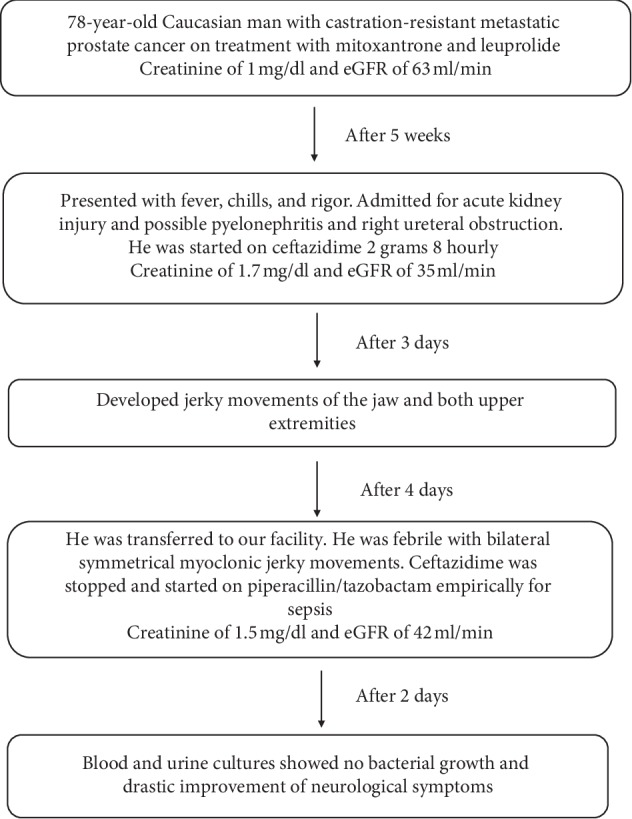Case of jerky movements secondary to ceftazidime-induced neurotoxicity.
This article describes the case of a 78-year-old Caucasian male patient with ceftazidime-induced neurotoxicity. The patient’s past medical history was significant for frequent self-catheterisation, chronic urinary retention, benign prostate hyperplasia, stool incontinence and peripheral neuropathy. He was diagnosed with metastatic prostate cancer that had metastasised to the lymph nodes, lungs, bone, brain and liver. Doctors were currently treating him with mitoxantrone and leuprolide. In addition, he was brought to the hospital for complaints of fever and abnormal movements. العاب قمار
One week before he was transferred to the hospital, he experienced rigors, chills and fever. Doctors referred him for laboratory tests including blood, urine and stool cultures. An X-ray CT scan of the head, abdomen and pelvis was also performed. He was treated with ceftazidime 2 g and was given the initial diagnosis of pyelonephritis and obstruction of the right ureter. Laboratory tests indicated an elevated creatinine. لعب القمار على الانترنت However, cultures were negative. CT scan did not show any further metastasis.
On the 3rd day, the patient developed jerky movements of the jaw and upper extremities.
The patient appeared to be sleepy and oriented only to person. He was febrile, his vitals showed 101.9 F, 100/65 blood pressure, 87 heart rate and 96% oxygen saturation with good protection of the airway. The jerky movements were bilateral, symmetrical myoclonic and interfered with his swallowing, talking and hand activities. Neurological examination did not show any significant findings. Ceftazidime was stopped and alternated with piperacillin/tazobactam for sepsis. العاب اون لاين Doctors diagnosed the patient with ceftazidime-induced neurotoxicity based on his disturbed level of consciousness and fever. He was further prescribed dexamethasone for suspected worsening of brain metastases.
With treatment he was able to swallow and talk without limitation and self-catheterisation. The antibiotics were discontinued and he showed clinical improvement without any further therapy. Similarly, he was discharged to a neurological facility.
References
Jerky Movement with Ceftazidime: A Case of Ceftazidime-Induced Neurotoxicity with a Review of the Literature https://www.ncbi.nlm.nih.gov/pmc/articles/PMC6930738/




